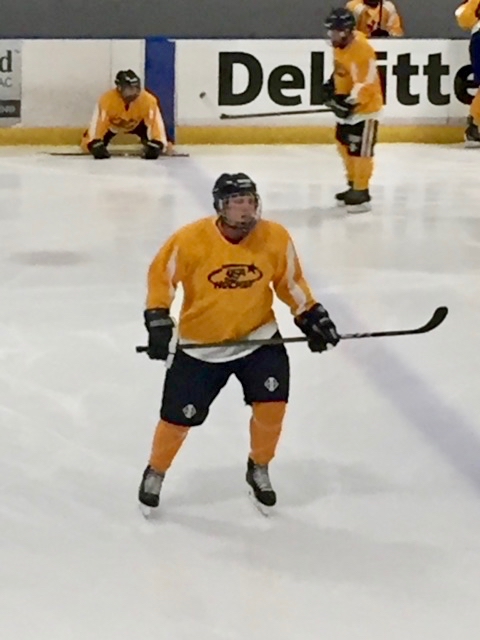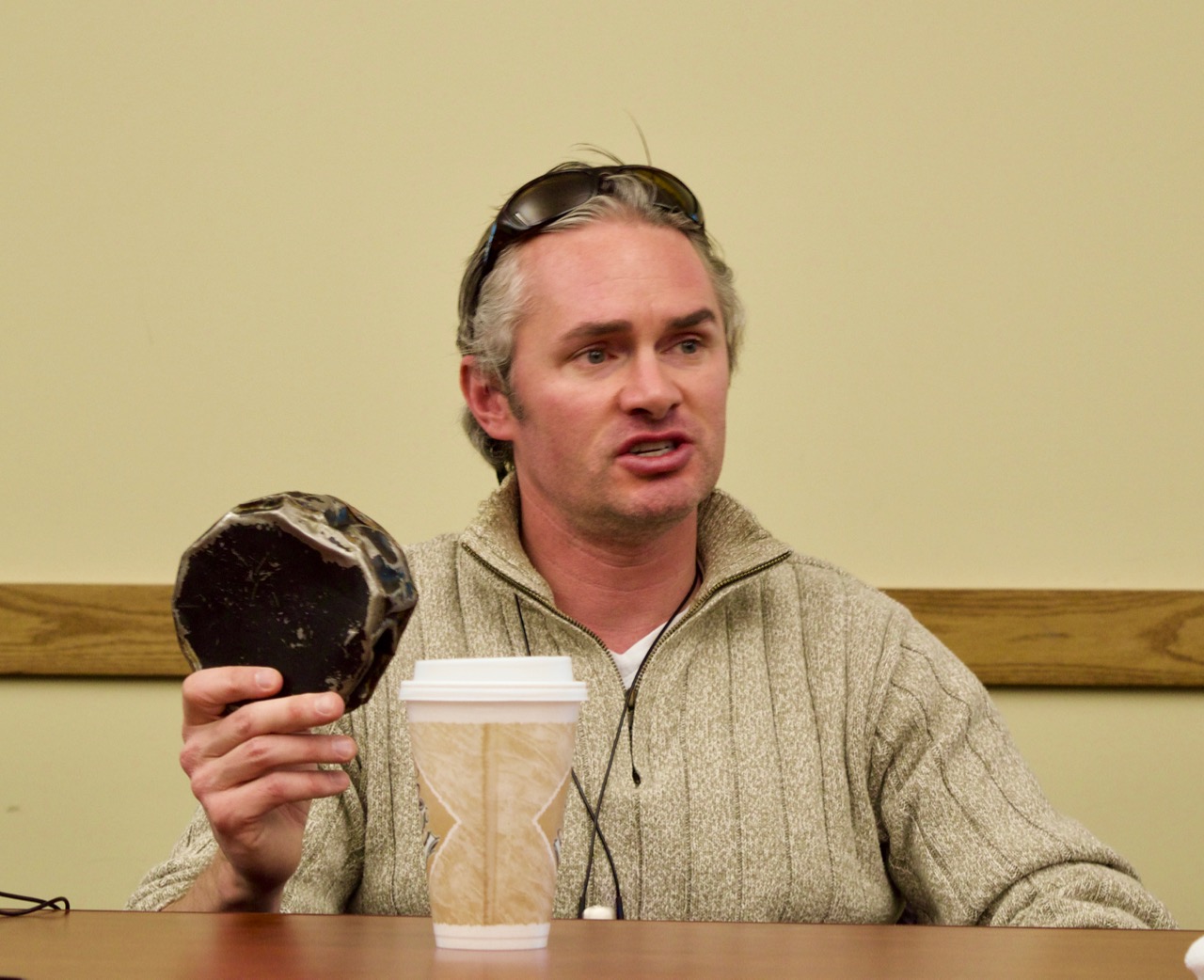Since January, fans attending Colorado Avalanche games have been treated to between-periods video of the Try Blind Hockey Day on January 17. Over 50 blind Coloradans went out on the ice that day, some for the first time, others with a stick in their hand for the first time. Fans are impressed by the video, but it is little more than an historical artifact now.
In just three short months, blind hockey has gone from being nonexistent in Colorado to a sport avidly pursued by dozens of players. And it’s produced a member of the newly-formed U.S. National Blind Hockey Team under the auspices of USA Hockey.
Daniel Belding, Cane Travel Instructor at CCB, was invited to be a member of the first U.S. team. The only other team right now is Canada, but other countries are anxious to get their blind athletes out on the ice soon, spurred on perhaps by the first-ever international blind hockey games planned for October. That’s when the new U.S. team will meet Canada in Pittsburgh for a best-of-three series.
Since January, about a dozen and a half Metro-area skaters, men and women and some as young as six years old, met weekely for practice. Craig Fitzpatrick, a member of the Washington Wheelers was temporarily located here for his day job and certainly helped inspire young blind hockey players. Fitzpatric visited CCB in March to talk about blind hockey, though a number of students were already going to practices. Fitzpatrick was also picked for the U.S. team.
As a result of all that ice time, Belding and fellow Cane Travel Instructor Steve Patten were invited to attend the 14th annual Toyota-USA Hockey Disabled Hockey Festival in Chicago last weekend. It was from among the 80-plus blind skaters that Belding, Fitzpatrick and others were invited to try out for the national team.
It’s never been a secret that Daniel loves hockey. So much so that he played on sighted teams in high school leagues in the Denver area. Though he didn’t think of himself as blind at the time despite limited central vision and even more limited peripheral vision. He nonetheless developed a number of alternative techniques to stay on the ice.
“You can hear the (standard) puck a lot better as the game goes on,” Daniel said of one of those alternate techniques, noting that the ice gets rougher with prolonged play.
But his experience with blind hockey dates to January 17 and the Try Blind Hockey Day at the Pepsi Center. He couldn’t be having more fun!
Blind hockey is a relatively new sport in the U.S. Though it started in Canada in the 1970s it wasn’t played below the 49th Parallel until three years ago. Along with teams in Canada, there were at least seven teams active in the U.S. at the start of this year, including the Wheelers. There will soon be more than a dozen. So the rapid rise in popularity of blind hockey in the Denver area really isn’t anything new, but parallels the rapid expansion of blind hockey in the U.S. since 2014. And maybe it prefigures a worldwide trend to come!
What’s up next for the national team is a skills camp in July and then a final cut-down to 14 from 30 in August. Those will be the players that face off against Canada in the fall.
For Belding, there’s no chance he’ll be slowing down. The chance to play the game he loves so much has energized him. He and Patten have been on the ice three mornings a week at Denver University for months already – at 5:30 a.m. If anything, he’ll be looking for more ice time now!



